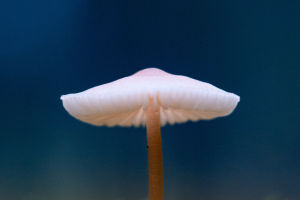Tulips, with their vibrant colors and elegant shapes, are among the most cherished flowers in gardens and floral arrangements worldwide.
As a quintessential symbol of spring, they burst onto the scene after winter, heralding warmer days and blooming landscapes.
But what truly makes tulips beautiful goes beyond their surface appeal. From their remarkable diversity to their rich cultural significance, tulips captivate hearts and inspire admiration.
Diversity of Colors and Shapes
One of the most striking features of tulips is their incredible variety. Available in nearly every color imaginable—ranging from bold reds and cheerful yellows to soft pinks and deep purples—tulips can brighten any garden or bouquet. The color palette allows for creative expression, as gardeners can mix and match different hues to create stunning displays.
Beyond colors, tulips also exhibit a wide array of shapes and sizes. Traditional cup-shaped blooms stand alongside fringed, parrot, and peony-like varieties, each contributing its unique flair. This diversity ensures that tulips can fit into any design aesthetic, whether in a formal garden or a casual bouquet, making them a versatile choice for any floral arrangement.
Symbolism and Cultural Significance
Tulips are steeped in history and symbolism, adding depth to their beauty. Originating in Central Asia, they were cultivated and popularized in the Ottoman Empire, where they symbolized wealth and power.
The 17th-century "Tulip Mania" in the Netherlands saw these flowers traded for exorbitant prices, reflecting their immense value in society. This historical significance has made tulips prominent in art and literature, where they often symbolize love, elegance, and grace. Their association with love makes them a popular choice for romantic occasions, such as weddings and anniversaries, further enhancing their appeal.
Garden Aesthetics
In the realm of gardening, tulips are a favorite among both professional landscapers and amateur gardeners. Their bold colors and structured form create striking focal points in flower beds. Planting tulips in clusters or alongside other spring-blooming flowers, such as daffodils or hyacinths, enhances their beauty and creates a harmonious garden scene.
The contrast between the sleek tulip petals and the more textured foliage of other plants elevates the visual interest of any landscape. Moreover, their ability to thrive in various climates and soil types makes them accessible to gardeners everywhere, allowing their beauty to be enjoyed across the globe.
Seasonal Appeal
Tulips are synonymous with spring, symbolizing renewal and the promise of warmer weather. The sight of tulips emerging from the soil after winter brings joy and anticipation, reminding us of the beauty that lies ahead. Their vibrant blooms often lift spirits, offering a refreshing burst of color after a long, dreary season. As they sway gently in the spring breeze, tulips evoke feelings of hope and happiness, making them cherished symbols of the changing seasons. This seasonal charm makes tulips more than just beautiful flowers; they serve as reminders of nature’s resilience and the cyclical nature of life.
Long-Lasting Beauty
Unlike many other flowers that wilt shortly after being cut, tulips possess a unique characteristic: they can continue to grow even after being harvested. This means that tulips can reach impressive heights and exhibit an extended blooming period when placed in a vase.
To maximize the longevity of cut tulips, it's essential to trim the stems at an angle and place them in clean water away from direct sunlight. Additionally, changing the water regularly helps keep them fresh. With the right care, tulips can maintain their beauty for several days, making them an ideal choice for home decor and special occasions.
Culinary Uses and Health Benefits
Interestingly, tulips are not just beautiful; they also have culinary applications. The petals of certain tulip varieties are edible and can be used to add a pop of color to salads or as a garnish for various dishes.
Tulip bulbs, while not commonly consumed, have been used historically as a food source in times of famine. Additionally, tulips are associated with several health benefits due to their antioxidant properties. The pigments found in tulip petals can have positive effects on skin health when used in topical applications, adding another layer of appreciation for these remarkable flowers.
Tulips are not just beautiful flowers; they embody a rich tapestry of colors, shapes, and historical significance. Their ability to enhance garden aesthetics and uplift spirits in spring makes them truly special. Whether you choose to plant them in your garden, include them in your floral arrangements, or simply enjoy their beauty in nature, tulips serve as a reminder of the exquisite charm found in the natural world. Next time you encounter these stunning blooms, take a moment to appreciate all that they represent, and let their beauty inspire you.


